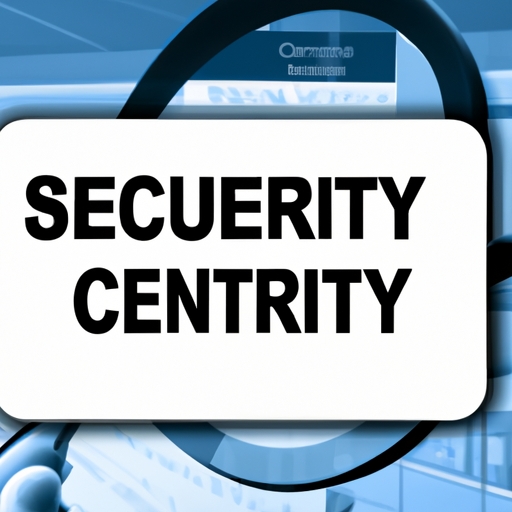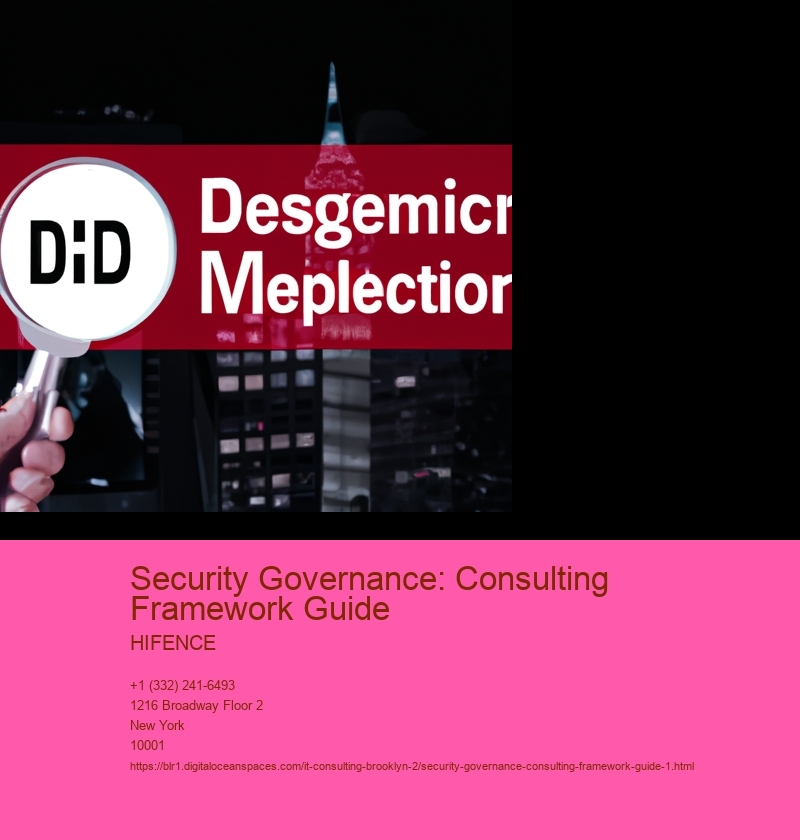Security Governance: Consulting Framework Guide
managed services new york city
Understanding Security Governance Principles
Okay, so, understanding security governance principles... Security Engineering: Consulting for Implementation . right. Its kinda like, the bedrock, you know? Like, the foundation of everything else youre trying to build in security. Think of it this way: you cant just slap some firewalls on and call it a day. (Though, some people totally try to).
Good security governance aint just about tech, either. (Duh). Its about how youre managing security, whos responsible for what, and how everything aligns with the overall business goals. See, if the CEO is like "We need to be the most secureest company ever!" check but doesnt give you budget or support... well, youre sunk. Thats a governance fail right there.
Principles, though, those are the guiding lights. Things like accountability - someones gotta be in charge, right? And transparency - everyone needs to know whats goin on, even if they dont understand all the technical jargon. Then theres risk management - figuring out what the biggest threats are and how to deal with em (before they deal with you, haha). And Oh! Dont forget compliance! (Regulations are a drag, but gotta follow em).
Without these principles, your security program is just... well, a mess. A poorly organized, expensive mess maybe. Like a bunch of shiny gadgets with no one knowing how to use them properly. Understanding these principles isnt just for the IT guys (sorry IT guys), its for everyone, from the board down to the interns. It's like, a company-wide mindset. Get it? managed services new york city And that's where a good consulting framework guide can really help, cause it lays all that out. (Hopefully in plain English, cause technical docs are the worst).
Assessing the Current Security Posture
Okay, so, like, when youre talkin about security governance – which, lets be honest, sounds super boring but is actually kinda important – one of the first things you gotta do is figure out where you are right now. Think of it like, you know, planning a road trip (but instead of beaches, its, uh, firewalls). You cant just blindly set off; you gotta know your starting point. Thats basically what "Assessing the Current Security Posture" is all about.
It means, you know, taking a real good, hard look at everything. What systems you got, what kinda security controls are already in place (or, uh, not in place, which is, like, a big problem). Are your employees trained on, like, not clicking on every dodgy link they see? (Because, seriously, some people...). What about your data? Is it locked down tight, or is it just kinda, you know, hanging out there for anyone to grab? (Big no-no!).
This assessment isnt just about technical stuff, either. (Though, yeah, the tech stuff is important). Its also about policies, procedures, and, you know, the overall security culture. Does everyone in the company care about security, or do they just see it as a nuisance? (If its a nuisance, youre gonna have a bad time). Its like, are people actually following the rules, or are they just, like, pretending to?
You can use, like, different frameworks and stuff to help you do this assessment. (Theres a ton out there, honestly). But the main thing is to be thorough and honest. Dont try to sugarcoat things (because, trust me, the bad guys wont). See where the weaknesses are, where the gaps are, and where you need to improve. (And, yeah, theres always room for improvement, right?). This assessment gives you a baseline so you can actually measure progress and make sure things are, like, actually getting better, not just staying the same, or, yikes, getting worse over time. You need that initial security posture to, like, build a proper security strategy after all.

Developing a Tailored Security Governance Framework
Developing a Tailored Security Governance Framework, eh? Well, that ains just copy-pasting some generic template, ya know? Its about crafting something that actually fits the unique curves and bumps of a specific organization (like, their size, industry, risk appetite... the whole shebang).
A good security governance framework, it aint just about ticking boxes for compliance (though, yeah, thats important too). Its about creating a culture, a mindset, where security is baked into everything. Think of it like... building a house. You cant just slap some walls up; you need a solid foundation, a blueprint, and someone who knows how to swing a hammer (or, in this case, implement security policies, train employees, and monitor for threats).
The "tailored" part is where the real magic happens.
Security Governance: Consulting Framework Guide - check
- check
- managed service new york
- check
- managed service new york
- check
- managed service new york
- check
So, developing a tailored framework? Its a process. It involves assessment, planning, implementation, and continuous improvement (because the threat landscape never sleeps, does it?). It requires good communication, a deep understanding of security principles, and a healthy dose of pragmatism. Plus, maybe, a good cup of coffee. Or several. Because, trust me, youll need em. Cause its hard.
And thats that.
Implementing the Security Governance Framework
Okay, so, like, implementing the Security Governance Framework... (deep breath). Its not just about, yknow, ticking boxes on a checklist. Its more bout, like, actually making sure things ARE secure. The Consulting Framework Guide, thats the roadmap, see? But roadmaps, they aint self-driving cars, are they?
We gotta think bout the specific organization, what their risks ARE, what they CARE about protecting. Cant just cookie-cutter this stuff. (Unless you WANT to get hacked, that is.) Its about figuring out policies, procedures, training – all dat jazz.

And, like, getting buy-in from everyone, from the CEO down to the intern who brings the coffee. If people don't understand WHY theyre following these rules, they just wont. Plain and simple. So, communication is KEY. (duh!) Gotta explain things in a way that makes sense to them, not just spout out security jargon.
Then theres the whole monitoring and auditing bit. You gotta, like, check to see if the framework is actually working, aintcha? If somethings broken, you gotta fix it. check And the framework, it cant be static, you know? It gotta evolve as the threat landscape changes. So, basically, its a never-ending cycle of implement, monitor, adjust, repeat. And if you do it right, hopefully, you'll keep the bad guys outta your system. Maybe.
Monitoring and Evaluating Security Governance Effectiveness
Monitoring and evaluating security governance effectiveness, well, thats like, keeping an eye on the thermostat to make sure your house aint freezing or boiling, right? (Except the house is your organization and instead of temperature, were talking about security risks). In a consulting framework guide, this part is super important. You cant just say you have good security governance; you gotta prove it.
Think of it this way, if you just put in all these fancy policies and procedures (and boy, are there a lot), but never actually check to see if anyones following them, or if they are even doing any good, then whats the point? Its like, buying a super expensive lock for your front door, but leaving the back window wide open.
So, how do you monitor and evaluate? It aint always easy. You gotta have some key performance indicators (KPIs) – metrics that show how well your security governance is working. This could be things like the number of security incidents, the time it takes to respond to a breach (hopefully there arent any!), or even employee awareness training completion rates. Important stuff, really.
Then, you gotta actually, you know, do the monitoring. This might involve regular audits, penetration testing (basically having someone try to hack you to see where the weaknesses are), or just reviewing logs to see if anything looks fishy. (Lots of logs, trust me).
And then, the evaluation part. This is where you take all that data youve collected and see if your security governance is actually making a difference. Are the KPIs improving? Are you reducing your risk exposure?
Security Governance: Consulting Framework Guide - managed services new york city
- managed it security services provider
- check
- managed service new york
- managed it security services provider
- check
- managed service new york
- managed it security services provider
- check
- managed service new york
Dont forget that communication is key too. You need to be able to explain your findings to stakeholders (like, the big bosses) in a way that they understand. No one wants to hear a bunch of jargon. Tell them whats working, whats not, and what youre going to do about it. And make sure everyone is on board. A security governance framework isnt any good if the people arent on board to implement it.
Basically, monitoring and evaluation is crucial for making sure your security governance isnt just a bunch of fancy paperwork, but is actually protecting your organization from threats. Its an ongoing process, not a one-time thing, and it requires commitment and resources.
Security Governance: Consulting Framework Guide - check
Continuous Improvement and Adaptation
Security governance, it aint a set-it-and-forget-it kinda thing, ya know? Think of it more like a garden (a garden thats constantly under attack by digital weeds, maybe). You gotta keep tending to it, always pulling out the bad stuff and making sure the good stuff is thriving. Thats where continuous improvement and adaptation comes in.
Basically, a consulting framework guide should stress the importance of not just sticking to the plan you made last year. The world, and especially the threat landscape, changes faster than you can say "ransomware". So, you gotta have processes in place to regularly check if your security governance is still, well, govern-ing. Are those policies actually being followed? Are the controls still effective? Is that shiny new AI thing messing with your data in ways you didnt anticipate?
And its not just about fixing problems. Its about learning and evolving. Maybe you had a near miss? Great! What can you learn from that? Maybe a new technology offers a better way to protect your assets? Awesome! How can you integrate it?
Adaptation is key (i mean, duh!). What worked for a small startup obviously, wont work for a huge multinational corporation. And what worked last year might be completely useless this year. So, a good security governance framework guide should emphasize the need to be flexible, to be agile, and to be constantly looking for ways to improve and adapt to the ever-changing world. managed service new york And, like, make sure your team knows they can suggest improvements without getting yelled at, yeah? Open communication is like, super important. If no one feels comfortable saying "hey, this isnt working," youre gonna have a bad time.
